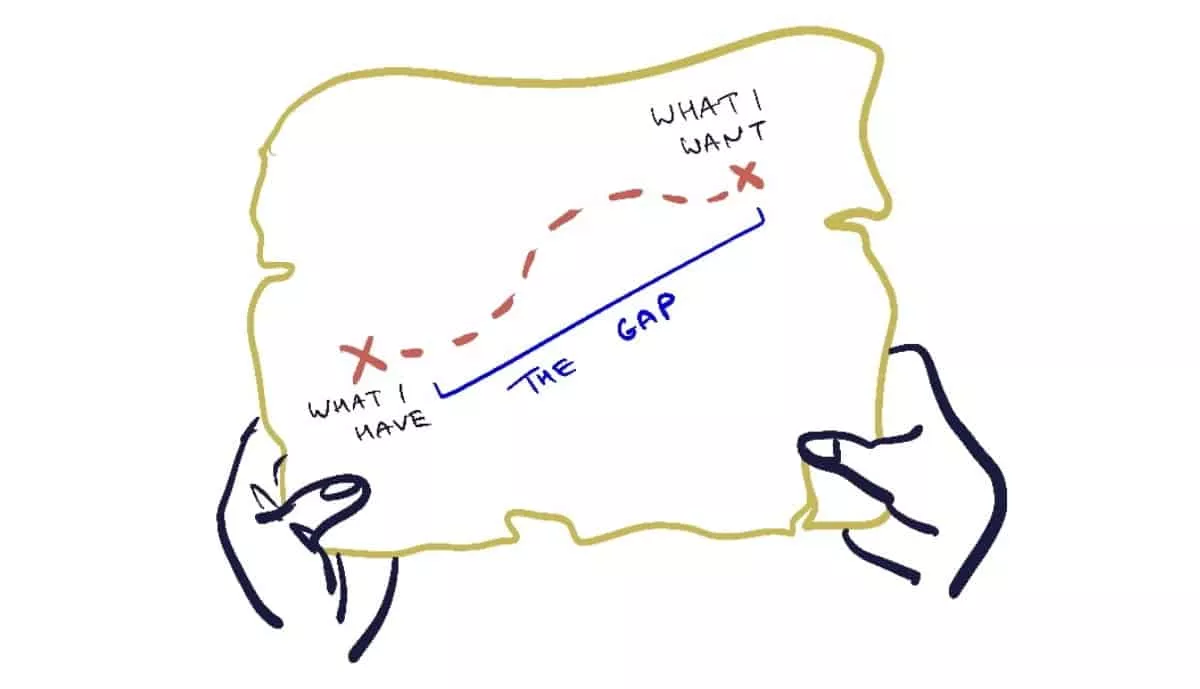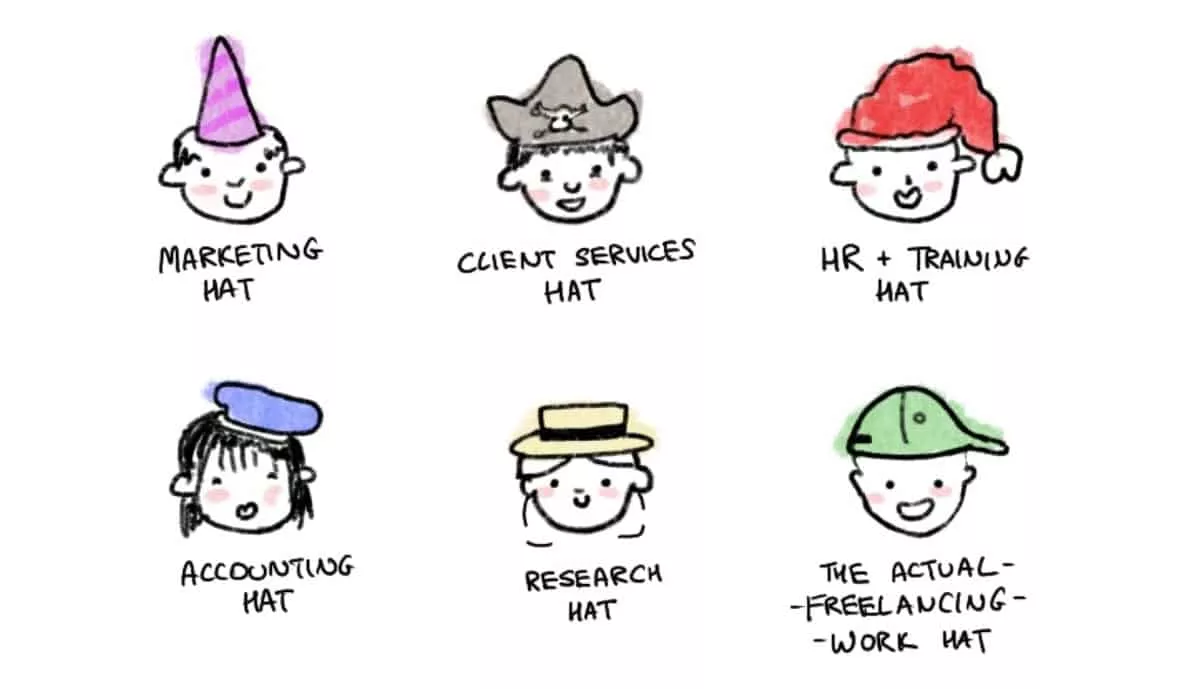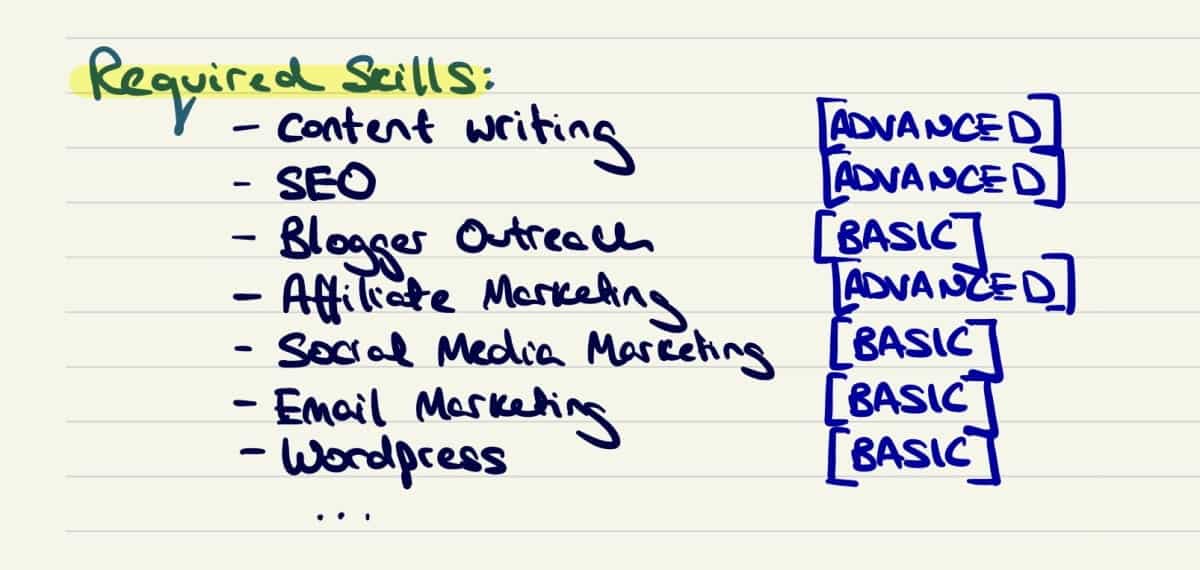
A skills gap analysis is one of those icky HR terms we might associate with boring corporate training days. As a freelancer, you might have happily left that kind of thing behind.
But hold up – what if a skills gap analysis is still entirely relevant? And kind of – really, really important?
As freelancers our skills and knowledge are our livelihood. And when WE are in charge of training ourselves, it’s critical to know which skills we have and which skills we need to develop further.
Luckily, a skill-gap analysis is simple and powerful. By the time you’re done reading this article, you’ll know how to perform your own. You can then add it to your repertoire of tools to advance your freelance career. Let’s go!
Simply put, a ‘skills gap’ refers to the difference between the skill that’s desired, and the skills currently possessed.

A conventional ‘skills gap analysis’ is usually where HR or management take a look at the current skills of their workforce.
They then compare these existing skills to the ideal skill sets needed to achieve company goals. The difference between the 2 is the ‘skills gap’ that they can then take steps towards closing.
It’s pretty much a ‘skills audit’ but with an action plan tagged onto the end.
When it comes to our career, we freelancers are expected to wear many hats. ALL the hats.

Excessive hat-wearing can mean we often get so engrossed in working in our freelancing projects, that we neglect working on the bigger picture of our freelance career – things like upskilling, branding and our business direction.
Noone is looking out for us to map out our career paths, do our taxes for us, or drag us along to company training days.
In The Future of Jobs Report, the World Economic Forum states that by 2022, over 54% of all workers will need to update or replace their competencies. As freelancers, this responsibility falls in our own lap.
Freelancers are hired for being specialists in the field. As technology and the workforce changes, there’s growing pressure on us to keep learning and strengthening our value proposition.
A skills gap analysis can open your eyes to what you need to do to become a better freelancer and attract the clients you currently only dream of.
So, to sum it up, a skill gap analysis:
In short, they take us from where we are, to where we want to be.
Hopefully by now you should be itching to do a skills gap analysis for yourself.
And it’s not rocket science. Just follow these 5 simple steps.
The first step is to pick the area that you want to focus on for this skills gap analysis. This will give you your ‘goal state’.
Remember, skill gap analyses are a tool that can be used at different levels.
You may want to do one for your freelancing business as a whole – e.g. ‘Have high-paying web development clients’ or ‘Be a full-stack web developer’.
OR you might want to pick a particular part of your freelancing work to focus on – e.g. ‘Monetised my blog’ or Mastered SEO writing’.
I find it helpful to write the goal in a present or past tense – as though I’ve already achieved it. After all, this step is about deciding your ‘goal state’. Where you want to be.
Done? Great, let’s move on.
Now, you’ve decided your goal state, identify the skills you need in order to thrive in it.
Go ahead – write down any skills that you think are required for you to reach and maintain that goal state. It’s important to also write down the proficiency level that’s required (beginner, advanced, etc).
Here are some prompts to help you identify the skills required:
You’ll notice that the last 2 questions on that list are future-oriented.
That’s because it’s important not to just focus on the present state of your industry, but to also try and predict where it is heading. After all, there’s a time lag between now and then. Think about what skills may be required for your future self to really thrive in this future space.
Sure, we aren’t fortune tellers. But things like researching trend reports and looking to innovative thought leaders in your industry can help spark some insight. What emerging tools or platforms may change your scope of work in the future?
List down these hard and soft skills as best you can.
Example skill list for a freelancer with the goal state of ‘being a sought-after tech writer with a monetised website’.

The above is just a scruffy example to give you an idea – your list should be much longer and the more detail you go into for each skill, the better.
Now that you know what important skills you will need, it’s time to do a reality check.
List down the skills that you think you currently own and the current level of proficiency for each.
As well as just questioning yourself, you can get a more accurate self analysis by the following:
You now have 2 very useful lists at hand – what you need, and what you have. It’s now time to compare the two.
Take a look through your list and see if there are any skills you don’t currently own. The point is to identify the discrepancies.
You might realise you’re lacking a lot of these skills. Don’t panic – this is normal! That’s why we’re doing this.
The first step is to highlight the skills that are missing, or that are not honed to the required ability (e.g. maybe you only have basic SEO knowledge, but you need to be ‘advanced’).
Next, you need to prioritise these skills and rank them from most to least important. To do so, decide on some sort of criteria such as:
Obviously, these aren’t the only ways to prioritise your missing skills. You might want to tackle them by the amount of ROI you’ll think you get by having that skill, or you may want to go for low hanging fruit by tackling the easiest first.
It’s up to you – just make sure you prioritise your missing skills before heading to the next step.
Now that you’ve identified the gap, it’s time to decide what you need to do to fill it.
You now have a list of skills that you need to develop, in order of importance.
From there, it’s an easy step of solidifying these into a list of milestones that you can now work on. Using the priorities that you have set, turn each skill into an action plan complete with a timeframe.
There’s an endless amount of ways you can develop the skills you need:
Make sure your plan is realistic too! You can’t expect to close the gap overnight; it is a process.
The final and most important step takes place after this step. The action itself! The skills gap analysis we described above is your springboard but make sure you take the steps to follow through.
Truth is, any time is a great time to run a skills gap analysis of your current skills. In particular:
Despite our best efforts to plan, it’s impossible to see the future. Whatever your freelance specialty is, your industry is bound to change as new technologies and practices pop up, and as more and more people become freelancers.
Taking time to check in on your progress and making a habit of doing regular skills gap analysis will help you stay competitive and confident in your abilities.
Prepare to make continuous learning part of your life and you’re bound to go far.
Dani is an editor and writer based between KL and Mexico City. Sprung from the advertising and travel industries, she’s also spent the last 10+ years freelancing for a slew of creative online businesses around the world. Connect with her via LinkedIn.